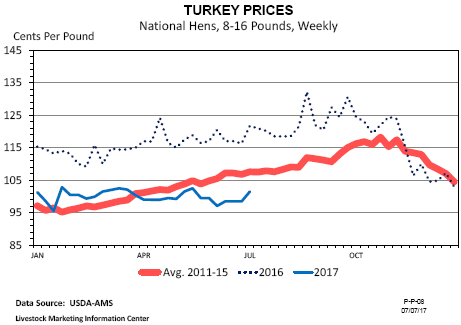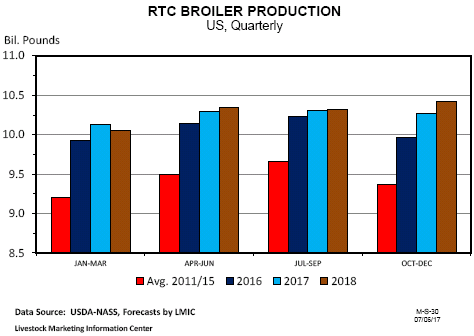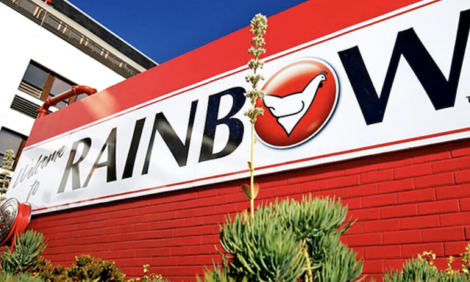



CME: Chicken Supplies During H1/2017 Up by Less Than 1%
US - The US meat supply situation at the mid-point of 2017 is showing smaller changes than has been the norm in past years. This is especially true for poultry, writes Steiner Consulting Group, DLR Division, Inc.Chicken supplies (production adjusted for exports and changes in frozen inventory) during the first half of the year were up by less than one per cent from the first half of 2016. Turkey disappearance through domestic distribution channels started out the year increasing by 4 per cent in the first quarter but preliminary calculations for the second quarter are little changed from the same period of 2016. On balance, turkey consumption during the first half of the year will only be up 2 per cent and the trend between the first and second quarters is not encouraging for the second half of the year.


The story for the chicken markets has been the challenge of breast meat quality, also known as "woody breasts". The condition seemed to come from too-rapid breast muscle development on breeds of large birds. The chicken industry had been focused on raising larger birds to take advantage of production efficiencies for further processed meat products.
Those efforts have been dialed back this year in order to alleviate the problem. Consequently, the average weights of birds at time of slaughter has been unchanged for the first half of this year from a year ago. During the last two years, average bird weights increased by 1 per cent-1.5 per cent from the prior years which was a direct supplement to total chicken meat production. There have also been issues related to genetics and breeding that have constrained hatchery output of chicks available for grow-out.
Consumer demand for chicken has been buoyant. Wholesale prices for parts and meat have rallied as the forces of modest production increases and higher prices for beef and pork provide a favorable backdrop for the market. Last fall, breast meat prices in the Northeast US wholesale market slipped below $1.00 per pound, the lowest prices since April 2006.
Breast meat prices in the same market this June averaged above $1.60, the highest price in two years. Processor profitability is reflecting these higher prices in wholesale markets as the composite value of parts and meat relative to feed costs during the second quarter was the best since the summer of 2014.
The economic situation for the turkey industry has not developed along a positive path of recovery like the chicken markets. Turkey prices normally bottom early in the year, which stimulates more usage through deli products and encourages early contracting of whole birds for Thanksgiving and Christmas.
Winter quarter product usage did get a boost, topping the year earlier volume by 5 per cent. Production was also up 5 per cent. Spring quarter usage has been disappointing, however, with April usage down 15 per cent from a year earlier and May usage up 4 per cent. Chances that second quarter turkey usage could be up from the same quarter in 2016 do not look good.
The turkey industry has responded by dropping whole bird prices at the wholesale level back to the lows seen last January. This may stimulate more turkey sales late this year and there has been some slight indication of tightening supplies by way of a recovery in prices in recent weeks.
In the mean time, the turkey industry may be taking actions to reduce production in the second half of the year to prop up prices and improve profitability. Turkey hatchery output in May declined 2 per cent from the prior May and eggs in incubators on June 1 were down 4 per cent from a year earlier.








